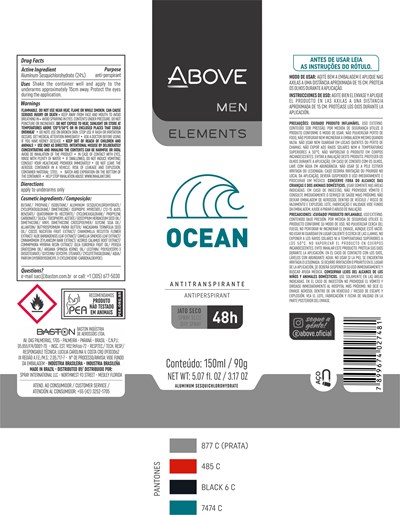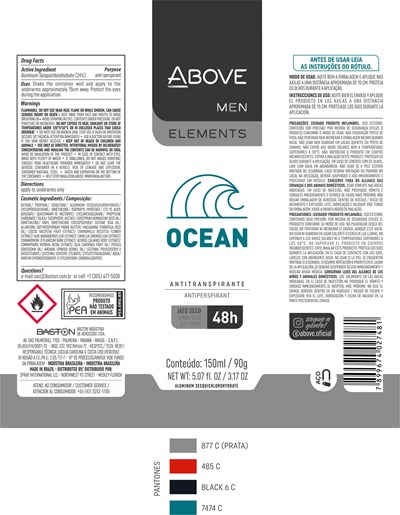Product Images Antiperspirant Above Elements Ocean
View Photos of Packaging, Labels & Appearance
Product Label Images
The following 2 images provide visual information about the product associated with Antiperspirant Above Elements Ocean NDC 73306-1117 by Baston Ind�stria De Aeross�is Ltda, such as packaging, labeling, and the appearance of the drug itself. This resource could be helpful for medical professionals, pharmacists, and patients seeking to verify medication information and ensure they have the correct product.
92c3a582 86aa 2b71 e053 2a95a90aea82

This is a description of a drug in aerosol form used as an anti-perspirant for underarms. It contains Aluminum Sesquichlorohydrate (24%) as the active ingredient. The user is warned that the product is flammable and should not be used near heat, flame or smoking. It also contains cosmetic ingredients such as Allantoin, Camellia Sinensis Leaf Extract, and Cyclopentasiloxane. The user is advised to shake the container well and apply to the underarms only, keeping the product away from face and mouth during the application. The instructions and warnings are provided both in Portuguese and Spanish. The product is manufactured by Baston Industria in Brazil and distributed by Spray International LLC in Florida.*
PACKAGE LABEL - Antiperspirant Above Elements Ocean

This is a drug facts label for an anti-perspirant product containing Aluminum Sesquichlorohydrate as the active ingredient. It provides directions for use, precautions, and warnings. The product should only be used on underarms, and users should shake the container well and apply approximately 15cm away from skin. The label warns against exposing the product to heat, flame, and avoiding spraying in the eyes. The container should not be punctured or incinerated, and it should not be used on broken skin. The label also includes cosmetic ingredients and contact information for customer service.*
* The product label images have been analyzed using a combination of traditional computing and machine learning techniques. It should be noted that the descriptions provided may not be entirely accurate as they are experimental in nature. Use the information in this page at your own discretion and risk.